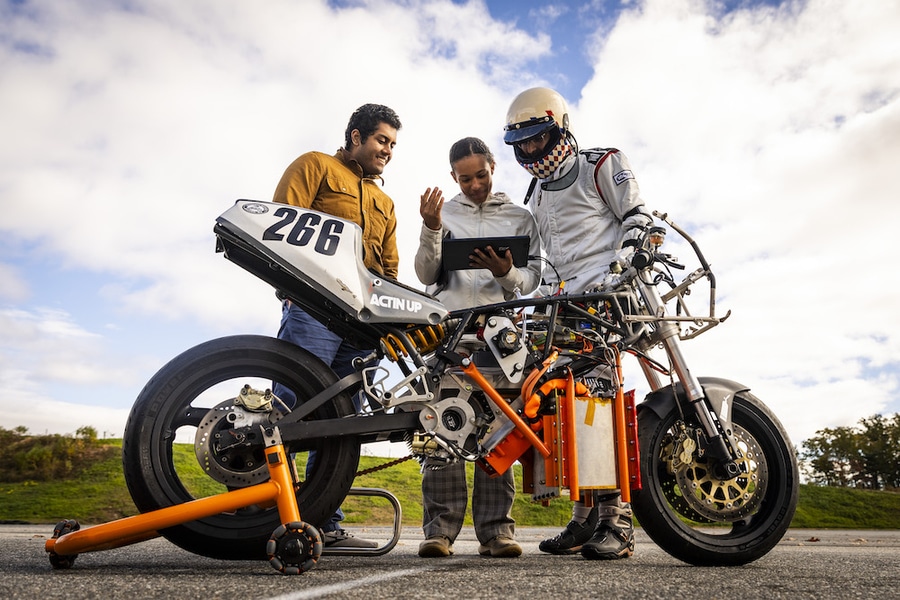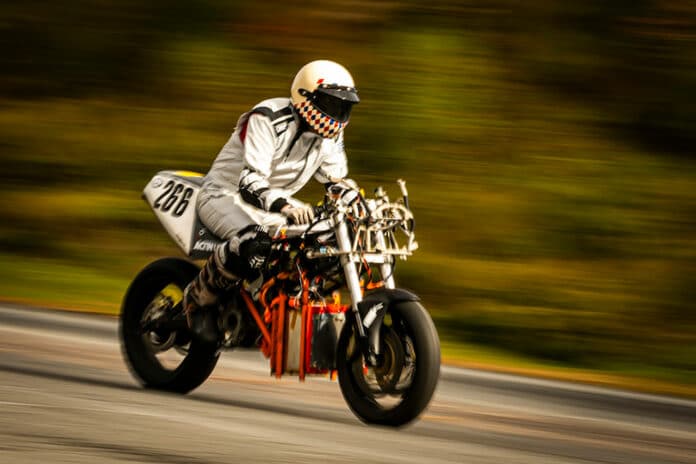MIT’s Electric Vehicle Team is up for a new challenge this year. Instead of building and racing traditional electric vehicles, they are now working on a hydrogen-powered electric motorcycle, using a fuel cell system as a testbed for new hydrogen-based transportation.
The motorcycle has already undergone its first full test-track demonstration in October. It is designed as an open-source platform that provides the flexibility of swapping out and testing different components. Furthermore, the team provides free online access to the plans, enabling others to create their own versions based on the shared design.
Unlike their previous projects, this vehicle won’t be competing in races or competitions but will be showcased at various conferences. The team, made up of roughly a dozen students, has been working on the prototype since January 2023.
“We’re hoping to use this project as a chance to start conversations around ‘small hydrogen’ systems that could increase demand, which could lead to the development of more infrastructure,” said Aditya Mehrotra, a graduate student and lead on the project, in a statement.
The team started with a frame from a 1999 motorcycle and customized it with several components to accommodate the electric motor, hydrogen tank, fuel cell, and drive train. The limited space available within the bike’s frame was a significant challenge, but the team managed to find creative solutions to mount the components and optimize spatial utilization.
The vehicle’s initial assessments were conducted on a dynamometer, similar to an instrumented treadmill that simulates a road. The motorcycle relied on battery power during its developmental stages until the fuel cell, which was supplied by the South Korean company Doosan, was delivered and installed.

As part of the project, team members are developing a kind of textbook describing what they did and how they carried out each step in the process of designing and fabricating this hydrogen-electric fuel-cell bike. No such motorcycle yet exists as a commercial product, although a few prototypes have been successfully assembled.
That kind of guidebook to the process “just doesn’t exist,” says Elizabeth Brennan, a senior in mechanical engineering. She adds that “a lot of the technology development for hydrogen is either done in simulation or is still in the prototype stages because developing it is expensive, and it’s difficult to test these kinds of systems.”
One of the team’s goals for the project is to make everything available as an open-source design, and they want to provide this bike as a platform for researchers and for education, where researchers can test ideas in both space- and funding-constrained environments.
Unlike a design built as a commercial product, MIT’s vehicle is fully designed for research purposes. The vehicle’s flexible design allows for easy interchange of components, which helps in collecting real hardware data and allows individuals to assess the efficacy of their design concepts.
The team claims that their project stands as the world’s first fully open-source, meticulously documented, rigorously tested, and released-as-a-platform fuel cell motorcycle. According to Mehrotra, prototypes developed by some companies in the past could have been more efficient and costly. However, the team’s project is unique in that no other entity has undertaken development and testing to the extent they have, providing comprehensive documentation that could serve as a scalable foundation for future endeavors or research applications.
The current vehicle being used for research purposes is not economically viable for commercial production. This is mainly due to the high costs associated with the fuel cell, which is a large and expensive component of the motorcycle’s design. Doosan Fuel Cell, a company that specializes in producing relatively small and lightweight fuel cells for drones, along with hydrogen storage and delivery systems, might be able to help address this issue in the future.
According to Annika Marschner, a sophomore in mechanical engineering and a team member, the project is an ongoing endeavor. As they continue to work on enhancing and refining the bike, making it more robust and efficient, they anticipate its growth and development over the years.
She sees a bright future for hydrogen as a clean fuel to replace fossil fuels over time. “I think it has a huge amount of potential,” she says. “I think one of the biggest challenges with moving hydrogen energy forward is getting these demonstration projects actually developed and showing that these things can work and that they can work well. So, we’re really excited to bring it along further.”
